
Pedestrian Crossings
Be aware of the basic rules that apply to all pedestrian crossings.
You need to know the differences between each type of crossing.

Be aware of the basic rules that apply to all pedestrian crossings.
You need to know the differences between each type of crossing.

A pelican crossing is a pedestrian crossing with traffic signals and a push button for pedestrians to activate.
Red, amber, and green signals face drivers, and red and green man signals face pedestrians.
Pedestrians press a button on either side of the road to activate the crossing.
When the green walking person appears on the far side of the road, it's safe to cross. But pedestrians must still check it is safe to cross.
A beeping sound usually accompanies the green light for pedestrians, to help those who are visually impaired.
After a set amount of time, the green person will flash, and drivers will see a flashing amber light to signal that they can proceed if the crossing is clear of pedestrians.
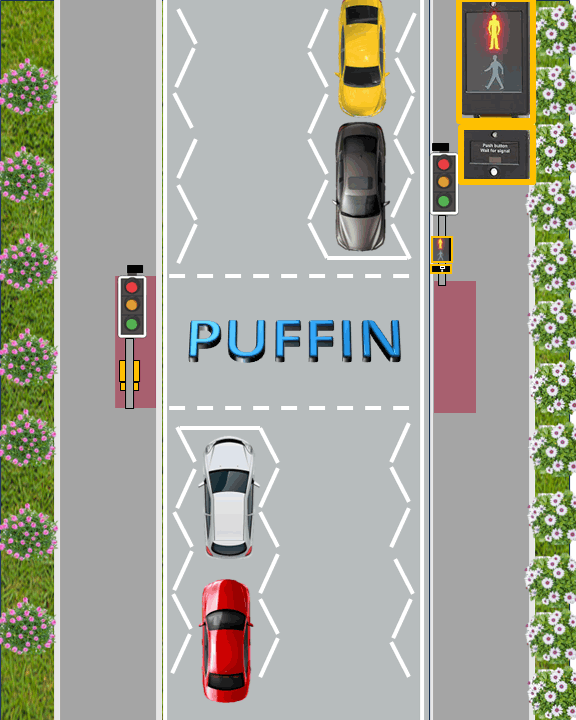
A puffin crossing is a pedestrian crossing that uses sensors and traffic lights to improve safety for pedestrians while keeping traffic flowing smoothly:
Pedestrians press a button at the side of the road to request to cross.
Sensors on top of the traffic lights and in the waiting area detect when pedestrians are waiting or crossing.
The red and green person symbols appear on a yellow and black box above the push button. Pedestrians wait for the green person to appear before crossing.
The crossing time is determined by the sensors each time.
If a pedestrian crosses before the green man, the sensors cancel the crossing request.
If pedestrians are still in the crossing area, the sensors extend the crossing time.
For blind or deaf pedestrians, the crossing may make a beeping sound or have a tactile rotating knob.
The kerbs are dropped at both ends of the crossing.
The pavement may slope towards the road with tactile paving.
Puffin crossings are different from pelican crossings because they don't have flashing amber signals.
They also have the pedestrian demand button and signal on the same side of the road as the pedestrians, while pelican crossings have the signals for pedestrians on the opposite side of the road.
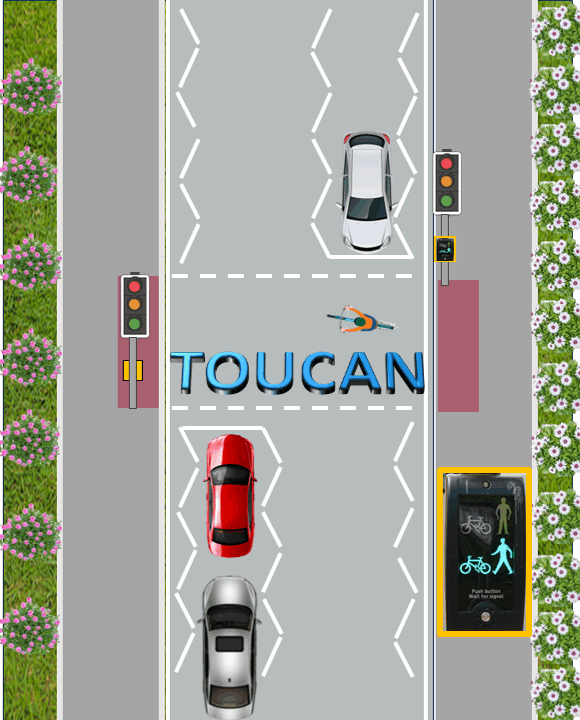
A toucan crossing is a pedestrian crossing that also allows cyclists to cross the road:
The name "toucan" comes from the idea that "two can" cross together.
Toucan crossings are usually 4 meters wide, which is wider than pelican or puffin crossings. This extra width allows for both pedestrians and cyclists to cross at the same time.
Toucan crossings have the same signals as puffin crossings, but also include a green bicycle symbol next to the green man. Older toucan crossings don't have a red bicycle, so bicycles are allowed to cross at any time if it's safe.
Toucan crossings are usually found near cycle paths.
Toucan crossings use sensors to detect when people are waiting to cross. They work in a similar way to puffin crossings, and the crossing time is established each time by on-crossing detectors.
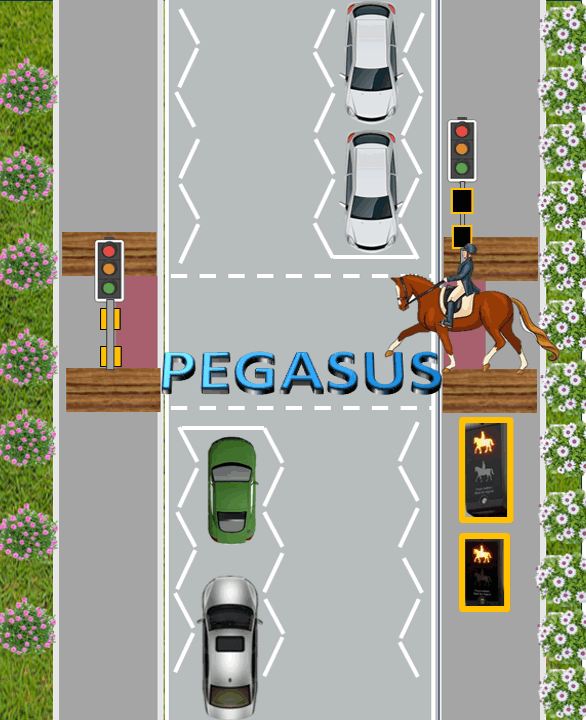
A pegasus crossing, also known as an equestrian crossing, is a type of crossing that allows both pedestrians and horse riders to cross the road.
Pegasus crossings are designed to be wider than pedestrian-only crossings to allow more space for horses. They are commonly found along bridleways and near areas popular with riders.
There are two control panels, one at normal height for pedestrians and one mounted two meters above the ground for horse riders.
The pictograms feature red and green horses and riders, as well as the standard green and red people.
Pegasus crossings use sensors to detect when people are waiting to cross or already crossing.
Pegasus crossings may have fenced enclosures or other barriers to keep horses at a safe distance from the road.
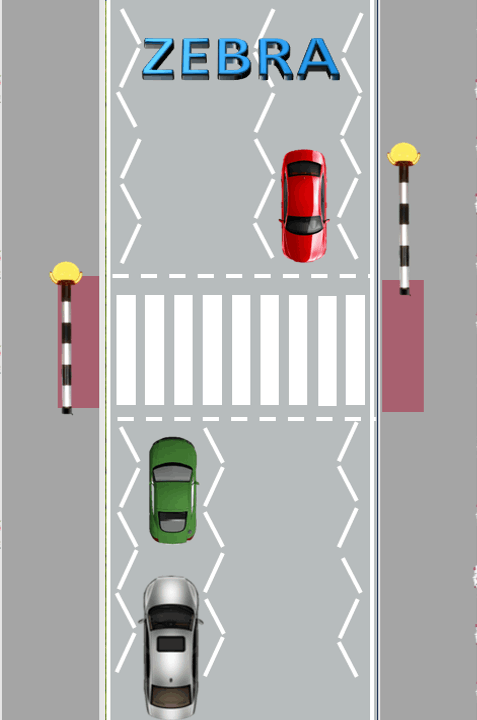
A zebra crossing is a pedestrian crossing marked with white stripes.
Pedestrians should wait on the kerb until approaching vehicles have stopped. They should also give traffic time to see them and stop before crossing. Although traffic should be paying attention on the approach to any crossing and be prepared to stop.
Drivers should stop at the broken "give way" line, which is about one meter before the crossing. They must give way to pedestrians waiting to cross and when a pedestrian has moved onto the crossing. Drivers should not overtake a vehicle that has stopped to allow pedestrians to cross.
Flashing Belisha Beacons signify there is a zebra crossing, these flash continuously throughout the day.
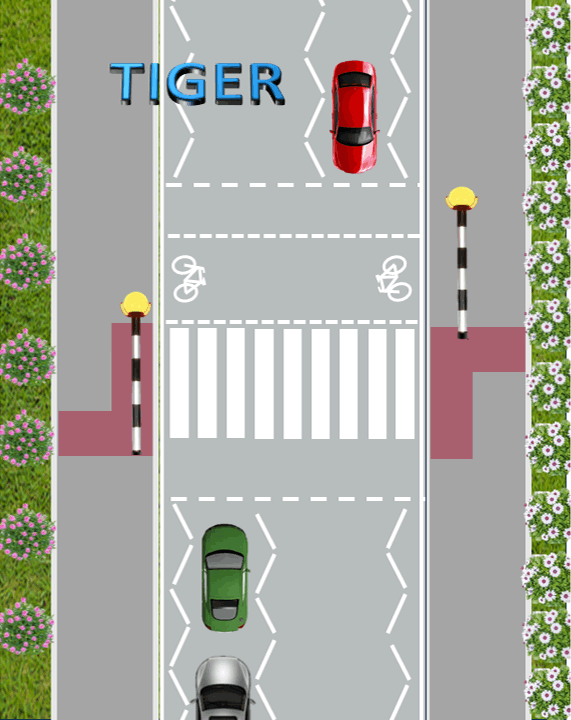
A parallel crossing, also known as a tiger crossing, is a type of pedestrian and cycle crossing in the United Kingdom that allows cyclists to cross the road without dismounting.
Pedestrians and cyclists must check that traffic has stopped before crossing, and should cross between the studs or over the zebra markings.
Unlike toucan or zebra crossings, they feature dedicated lanes for pedestrians and cyclists. This makes them ideal for use on cycle lanes.
Traffic must be prepared to stop in the same manner as they would at a zebra crossing if a pedestrian or cyclist were waiting to cross, and MUST stop if someone is on the crossing.
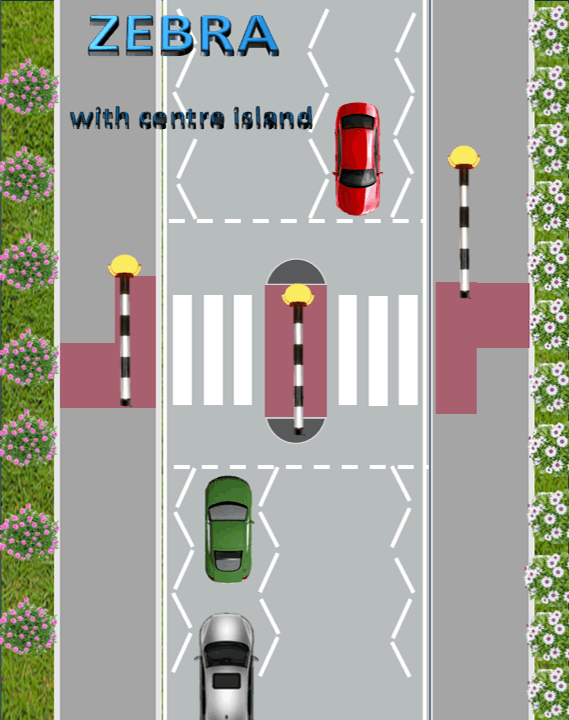
Work in the same way as a zebra crossing without an island, apart from each section of the crossing should be treated individually. Therefore, pedestrians may need to wait in the island until traffic has stopped before they proceed.
Traffic should be paying attention on the approach to a crossing and should be prepared to stop is someone is waiting to cross. And MUST stop is someone is already on that section of the crossing.
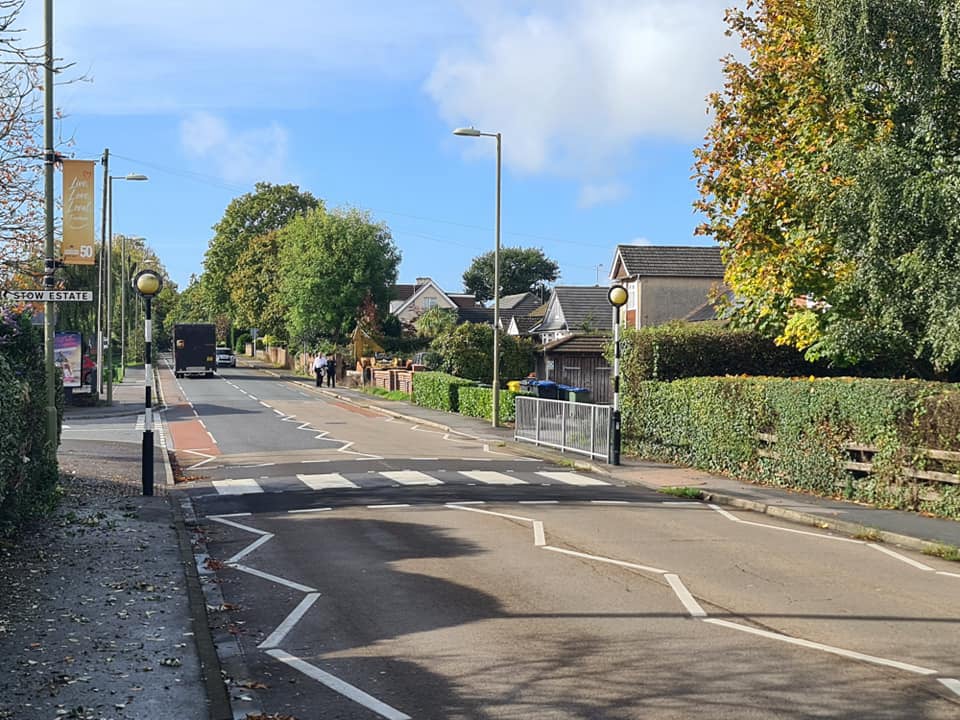
Drivers should always be slowing down slightly on the approach in case lights change, or someone is crossing even if the lights were green. This will mean that should they need to stop quickly, the reduced speed will mean they need less space to come to a complete stop.
Drivers should NEVER be increasing their speed on the approach to a crossing.
All crossing will have zig zag lines painted before and after the crossing, and on both sides of the road.
These have rules!
You MUST NOT park on any area marked with ZIG ZAGs.
You MUST NOT overtake anyone on a ZIG ZAG area.